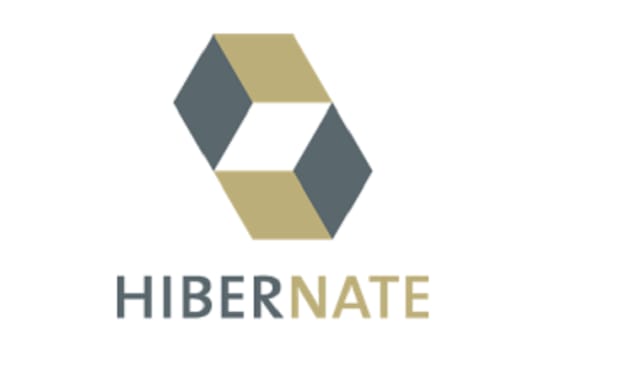Ruby on Rails Interview Questions and Answers
Most Popular Ruby on Rails Job Interview Questions

Practice here the most popular Ruby on Rails Interview Questions and Answers.
What is Ruby on Rails (RoR)?
Ruby on Rails, also known as Rails, is a web application framework written in Ruby programming language. It follows the Model-View-Controller (MVC) architectural pattern and provides a set of conventions for rapid web application development.
Explain the Model-View-Controller (MVC) pattern in Rails.
MVC is an architectural pattern used in Rails to separate the application's concerns into three components: models, views, and controllers. Models handle the data and business logic, views handle the presentation layer, and controllers manage the flow of data between models and views.
What are the advantages of using Ruby on Rails?
Some advantages of using Ruby on Rails include:
- Convention over configuration: Rails provides sensible defaults and conventions, reducing the need for explicit configuration.
- Rapid development: Rails offers a set of tools and conventions that enable developers to build web applications quickly.
- MVC architecture: The separation of concerns in MVC makes the code easier to maintain and test.
- Active Record: Rails' ORM (Object-Relational Mapping) framework simplifies database interactions.
- Ruby language: Ruby is a programmer-friendly language known for its readability and productivity.
How do you define routes in Rails?
Routes in Rails are defined in the config/routes.rb file. Routes map URLs to controller actions. You can define routes using the get, post, put, patch, and delete methods, among others. For example, get '/articles', to: 'articles#index' maps the URL '/articles' to the index action in the ArticlesController.
Explain the difference between render and redirect_to in Rails.
render: The render method is used to render a view template within the current request/response cycle. It does not trigger a new request. It is commonly used to render HTML or JSON views based on the data provided by the controller action.
redirect_to: The redirect_to method is used to issue an HTTP redirect to a different URL. It triggers a new request and is commonly used to redirect the user to a different page or action after a certain operation.
What is a migration in Rails?
Migrations are a way to manage database schema changes in Rails. They are Ruby classes that allow you to modify the database structure using a domain-specific language (DSL). Migrations handle tasks such as creating tables, adding columns, modifying indexes, and more. They help in keeping the database schema in sync with the application's codebase.
How do you validate user input in Rails?
Rails provides a wide range of validation helpers to ensure the integrity of user input. Some common validation methods include presence, length, uniqueness, numericality, and format. These validation methods are used within the model classes to enforce data validation rules.
What is ActiveRecord in Rails?
Active Record is an object-relational mapping (ORM) library in Rails. It provides an interface to interact with databases using Ruby objects. Active Record handles the mapping between tables in a relational database and the corresponding Ruby classes, making it easier to work with databases in Rails applications.
How do you create a new Rails application?
To create a new Rails application, you can use the rails new command followed by the desired application name. For example, rails new MyApp creates a new Rails application named "MyApp." This command generates the necessary files and directory structure to start building a Rails application.
What is the purpose of a migration in Rails, and how is it created?
Migrations in Rails are used to manage database schema changes. They allow you to create, modify, or delete database tables, columns, and indexes. Migrations are created using the rails generate migration command, which generates a new migration file in the db/migrate directory. The migration file contains Ruby code that describes the changes to be made to the database schema.
Explain the difference between belongs_to and has_many associations in Rails.
- belongs_to and has_many are associations used to define relationships between models in Rails.
- belongs_to is used when a model object belongs to another model object. For example, if a Comment belongs to a Post, you would define the association as belongs_to :post in the Comment model.
- has_many is used when a model object can have multiple associated objects. For example, if a Post can have multiple Comments, you would define the association as has_many :comments in the Post model. This allows you to retrieve all the associated comments for a post.
How do you handle authentication and authorization in a Rails application?
Authentication is the process of verifying the identity of a user, while authorization determines the user's privileges and permissions within the application.
- For authentication, you can use gems like Devise or Authlogic, which provide ready-to-use modules and helpers for user authentication.
- For authorization, you can use gems like CanCanCan or Pundit, which allow you to define roles and permissions for different user types and control access to certain actions or resources based on those permissions.
Explain the concept of a RESTful API in Rails.
A RESTful API (Application Programming Interface) is an architectural style that provides a set of conventions for building web services. In Rails, you can build a RESTful API by defining routes, controllers, and actions that correspond to different CRUD operations (Create, Read, Update, Delete) on resources. By adhering to RESTful principles, you can design APIs that are intuitive, scalable, and easily consumable by client applications.
How do you optimize database queries in Rails?
There are several ways to optimize database queries in Rails:
- Properly indexing the database tables based on the frequently used columns can significantly improve query performance.
- Use eager loading (includes or joins) to minimize the number of database queries when accessing associations.
- Utilize database-specific query optimizations like using pluck instead of retrieving full model objects when only specific attributes are needed.
- Caching query results can help reduce the load on the database and improve response times.
- Analyzing and optimizing slow queries using tools like the Rails Query Analyzer (rake db:analyze).
How do you handle background processing in Rails?
Background processing is commonly used for handling time-consuming tasks asynchronously in Rails applications. Some popular background processing libraries in Rails include Sidekiq, Resque, and DelayedJob. These libraries allow you to offload tasks to background workers, ensuring that the main application remains responsive. You can define jobs to perform specific tasks and enqueue them for execution in the background. This approach is useful for tasks like sending emails, generating reports, or processing large datasets.






Comments
There are no comments for this story
Be the first to respond and start the conversation.